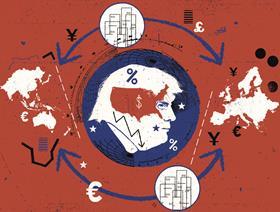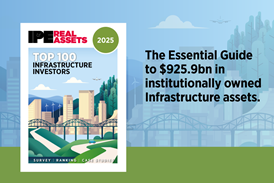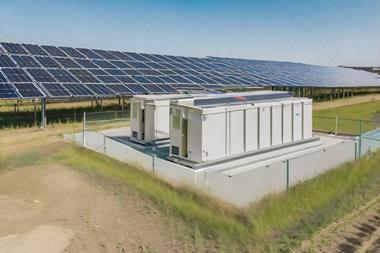Donald Trump is delivering a radically new environment for real assets. Christopher Walker examines whether his “big, beautiful bill” is a gift or a mixed blessing for investors
Washington has been mesmerised by US President Donald Trump’s “big, beautiful bill”. For real estate investors, it has two major consequences: it is likely to encourage more liquidity in the asset class, but it will have a regressive impact on environmental and social sustainability, potentially increasing risks in the market.
As Lucienne Mosquera, founder and CEO of SustainCRE, writes in her analysis, “the bill effectively reorients federal tax policy to reward private investment, especially in real assets, while walking back environmental, social and regulatory mandates introduced over the past five years”.
There are many provisions in the bill that are positive for commercial real estate. The expansion of opportunity zones and low-income housing tax credits brings much-needed capital into affordable housing and urban redevelopment. While full expensing of qualified property improvements allows owners and sponsors to immediately write off capital expenditures, improving cash flow and internal rates of return. “This is a substantial advantage, particularly in higher-interest environments where carrying costs are rising,” Mosquera writes.
Above all, the preservation of the 20% pass-through deduction, alongside the retention of 1031 exchanges and carried interest treatment, “cements the legal and tax foundations” of US commercial real estate “ownership models”, she adds. “This ensures continuity for real estate partnerships, private equity and institutional platforms. Taken together, these provisions reinforce real estate’s position as a structurally advantaged asset class within US tax policy.”

However, there is also plenty for investors to be concerned about. Mosquera notes that the bill “strips out federal green incentives for building upgrades and retrofits” and has no ESG or resilience frameworks, leaving buildings “exposed to both physical risk and long-term transition risk”. The expansion of opportunity zones “occurs without environmental guardrails”.
Speaking to IPE Real Assets, Mosquera concludes that Trump’s bill “risks entrenching short-termism in commercial real estate capital allocation”. She says: “By sidelining sustainability-linked incentives and resilience provisions, it potentially undermines asset-level competitiveness, especially for buildings reliant on institutional capital with ESG mandates. This could widen the value gap between compliant, future-proofed assets and those exposed to regulatory or climate risk, particularly in secondary markets.”

The bill notably walks back measures introduced by Joe Biden’s Inflation Reduction Act (IRA) that support energy-efficient construction and building electrification. While these changes reduce policy complexity, they also create a widening misalignment between US real estate funds and the structural mandates of global capital. Long-term investors, such as pension funds, sovereign wealth funds and insurers, are increasingly governed by fiduciary frameworks that treat climate risk as a financial risk. “These are not discretionary ESG preferences,” says Mosquera. “They are compliance obligations embedded in reporting regimes.”
The implications for real estate arise amid speculation about a potential reallocation of global real estate capital away from US towards Europe or Asia-Pacific – and, in particular, Japan.
Reversal on renewables could be boon for China
For infrastructure, the mixed picture is similarly mixed. It certainly could have been worse. Had section 899 not be jettisoned, it would have imposed so-called ‘revenge taxes’ on overseas investors in US assets. Jon Phillips, CEO of the Global Infrastructure Investor Association, says its removal “has sent a positive signal that the US is committed to attracting long-term private capital”.
He is hoping for more positivity in the autumn, when Congress is expected to turn to the reauthorisation of programmes contained in the Infrastructure Investment and Jobs Act, which currently contains very few incentives to attract private investors. “Congress has the power to usher in a ‘golden era’ of American infrastructure,” Phillips says.

As far the current legislation, “important features of the IRA are under significant pressure”, Phillips says. “Components that have worked to incentivise investment and create jobs”, such as investment tax credits and production tax credits, are “disappointingly being pared back”.
“It’s clear to see that the carrot and stick has not been evenly applied,” says Jags Walia, head of global listed infrastructure at Van Lanschot Kempen. “While nuclear, gas and the grid infrastructure will likely benefit from supportive measures, renewable energy sources will face challenges. We expect this will stunt the growth of renewables in the US, whilst leaving it unable to further ramp up existing power generation when needed, thereby leading the price of power to potentially rise.”
This is something the American Clean Power Association agrees with. This week it issued a statement from CEO Jason Grumet described Trump’s bill as “a step backward for American energy policy”. It said: “The intentional effort to undermine the fastest-growing sources of electric power will lead to increased energy bills, decreased grid reliability and the loss of hundreds of thousands of jobs. Most discouraging is forfeiting the progress we’ve made in manufacturing batteries, wind turbines and solar panels.”
This could be an important point for the US, which is already losing ground on China in clean technology. According to the True North Institute, a think tank focused on the energy transition, China already dominates solar, wind and lithium-ion batteries and soon will dominate electric-vehicles sector around the world, along with hydrogen electrolysers, heat pumps, fuel-cell trucks, nuclear fission and carbon capture.
Stan Miranda, founder of CEO of the Truth North Institute, says this is “the most important aspect” of the bill, which did “little to help the clean energy industry compete against China”. When combined with the earlier withdrawal of planned funding for new clean technologies by the Department of Energy, the bill “represents a major setback for the industry, virtually handing over future clean technologies to the Chinese”.


















